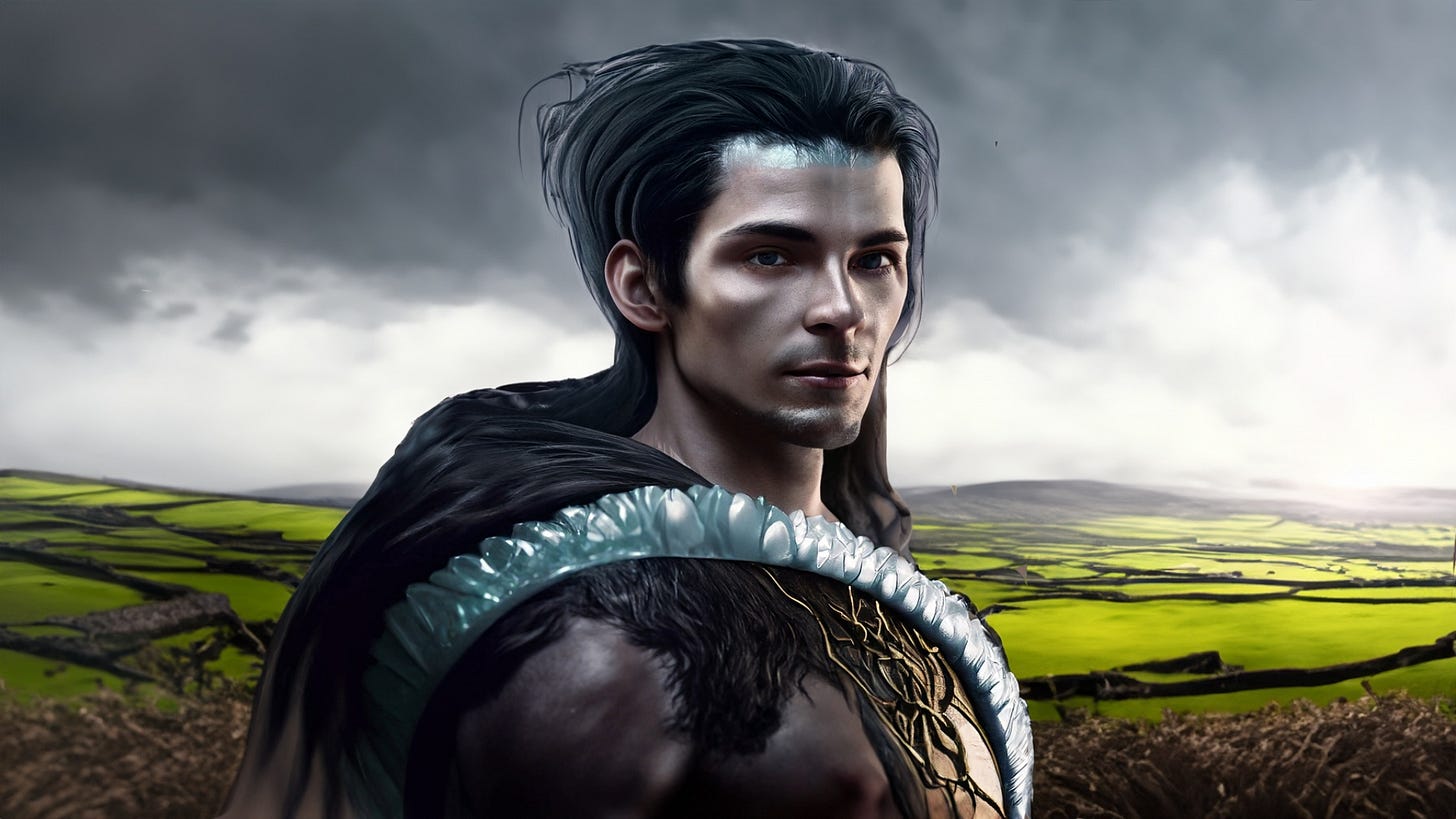Lugh, known as Lugh Lamhfada or Lugh of the Long Arm, stands as a central figure among the Tuatha Dé Danann, the divine tribe of Irish mythology. His character is steeped in mythological complexity, reflecting the intricate genealogies and rich symbolism characteristic of Celtic folklore. In this comprehensive analysis, we will explore the origins, attributes, roles, and significance of Lugh within the context of Celtic mythology, delving into his multifaceted nature and enduring legacy.
Origins and Lineage:
Lugh's lineage, as depicted in the Lebor Gabála Érenn, intertwines divine and monstrous ancestry, shaping his dual nature and symbolic significance. Born to Cian of the Tuatha Dé Danann and Ethniu, daughter of Balor of the Fomorians, Lugh embodies the union of opposing forces, embodying the potential for reconciliation and transcendence.
Attributes and Abilities:
Lugh's epithet, "Lugh Samildánach," highlights his mastery of diverse talents and skills, symbolizing his multifaceted nature and his status as a paragon of excellence in Celtic tradition. His attributes encompass:
Warriorship: Lugh's prowess in combat, epitomized by his epithet "Lugh Lamhfada," underscores his role as a formidable warrior and leader on the battlefield. His spear, Gáe Bulg, symbolizes his invincibility and strategic acumen in warfare.
Craftsmanship: Lugh's creative genius extends to craftsmanship, as he is credited with the creation of legendary artifacts such as the Gáe Bulg and the Cath Maige Tuired. His skills as a craftsman reflect his ability to shape the material world and imbue it with symbolic meaning.
Magic: Lugh's association with magic and sorcery signifies his mastery of arcane arts and his connection to the supernatural realm. His command of mystical forces empowers him to achieve his goals and transcend mortal limitations.
Leadership: As a charismatic leader, Lugh unifies the Tuatha Dé Danann and inspires them with his wisdom and authority. His leadership qualities embody ideals of kingship and sovereignty, guiding his people through times of adversity with courage and vision.
Roles and Mythological Significance:
Lugh's roles within Irish mythology are manifold, each contributing to his symbolic significance and cultural impact:
Savior and Champion: Lugh's triumph in the Cath Maige Tuired establishes him as a heroic figure and a symbol of hope for the Celtic people, demonstrating his ability to overcome adversity and secure victory against formidable foes.
Sun God and Harvest Deity: Lugh's association with the sun and agricultural cycles connects him to themes of fertility, abundance, and renewal. As a solar deity, he embodies the life-giving power of the sun and the cyclical rhythms of nature.
Cultural Hero and Patron of Arts: Lugh's patronage of the arts inspires creativity and innovation, enriching Celtic culture with his legacy of craftsmanship, music, poetry, and other forms of cultural expression. His mythological exploits serve as a source of inspiration for artists, writers, and musicians throughout the ages.
Legacy and Influence:
Lugh's legacy transcends the boundaries of myth and folklore, leaving an indelible mark on Celtic culture and identity. His myths and legends continue to resonate with contemporary audiences, inspiring art, literature, and popular culture. Moreover, Lugh's archetype as the heroic champion, the wise leader, and the skilled artisan embodies enduring ideals of courage, wisdom, and creativity that resonate with people across cultures and generations.
Lugh emerges as a towering figure in Irish mythology, embodying the complexity and richness of Celtic spirituality. His multifaceted nature, encompassing warriorship, craftsmanship, magic, and leadership, reflects the interconnectedness of diverse domains of knowledge and skill. As a symbol of heroism, creativity, and resilience, Lugh embodies timeless ideals that continue to captivate the human imagination and inspire cultural expression.




